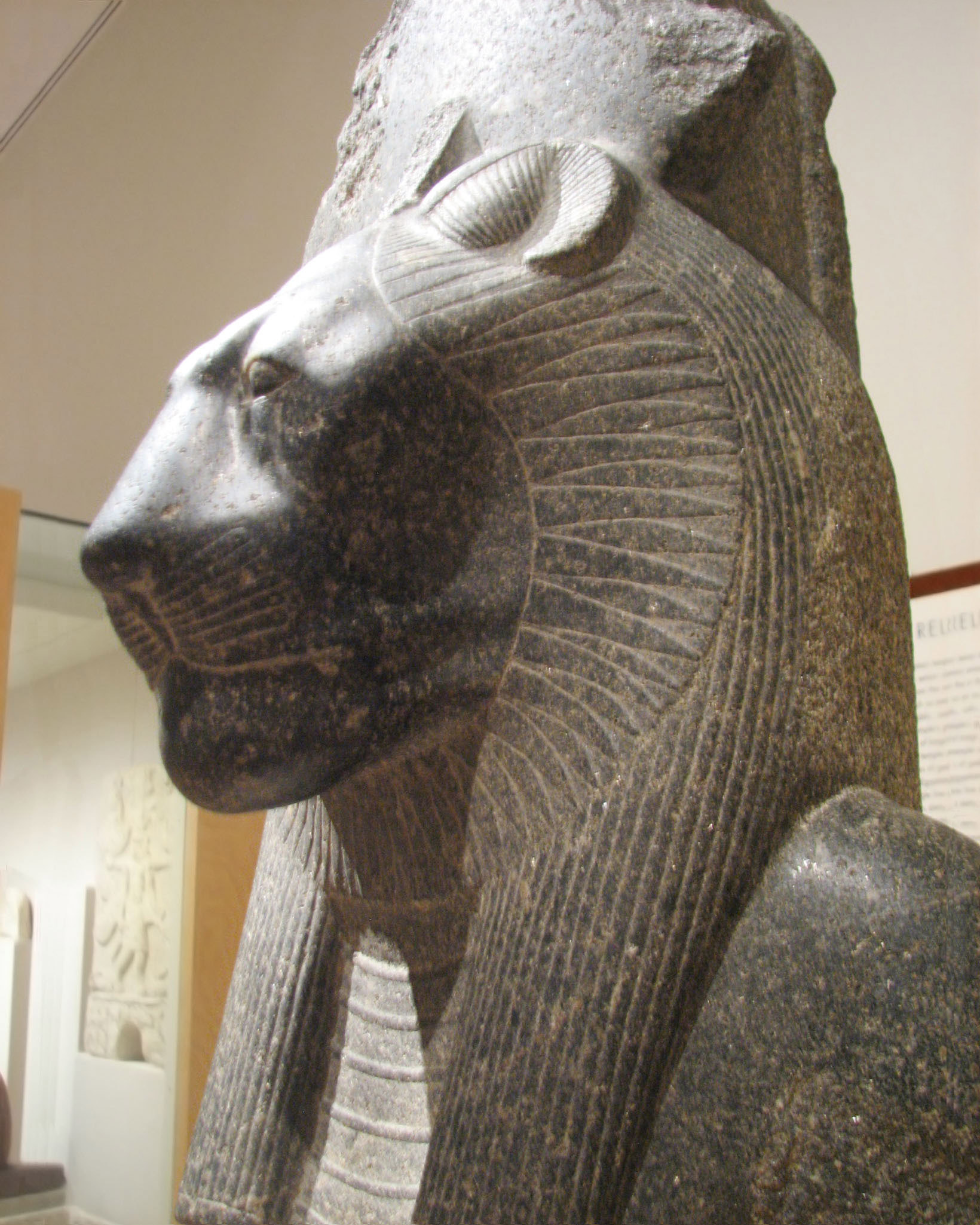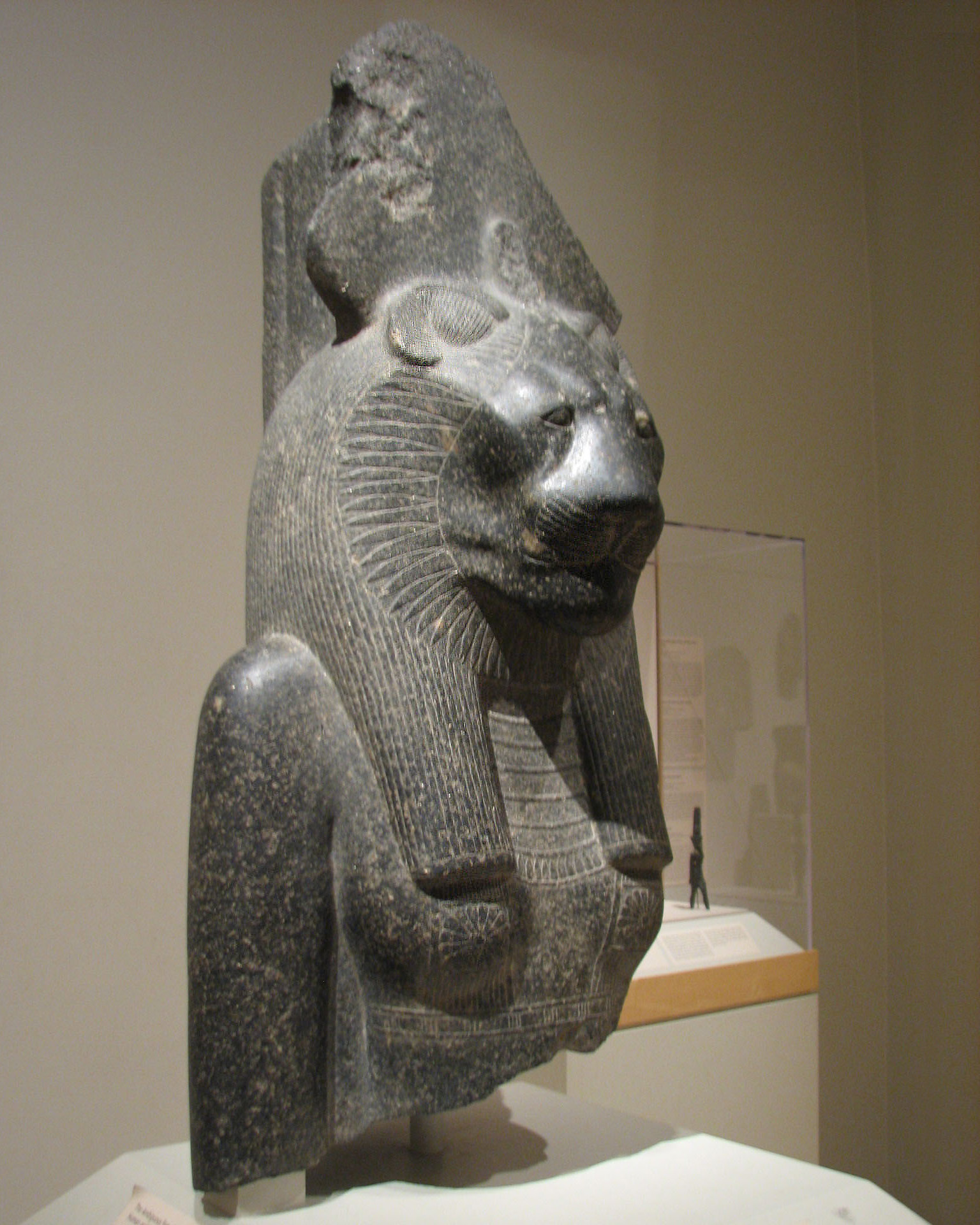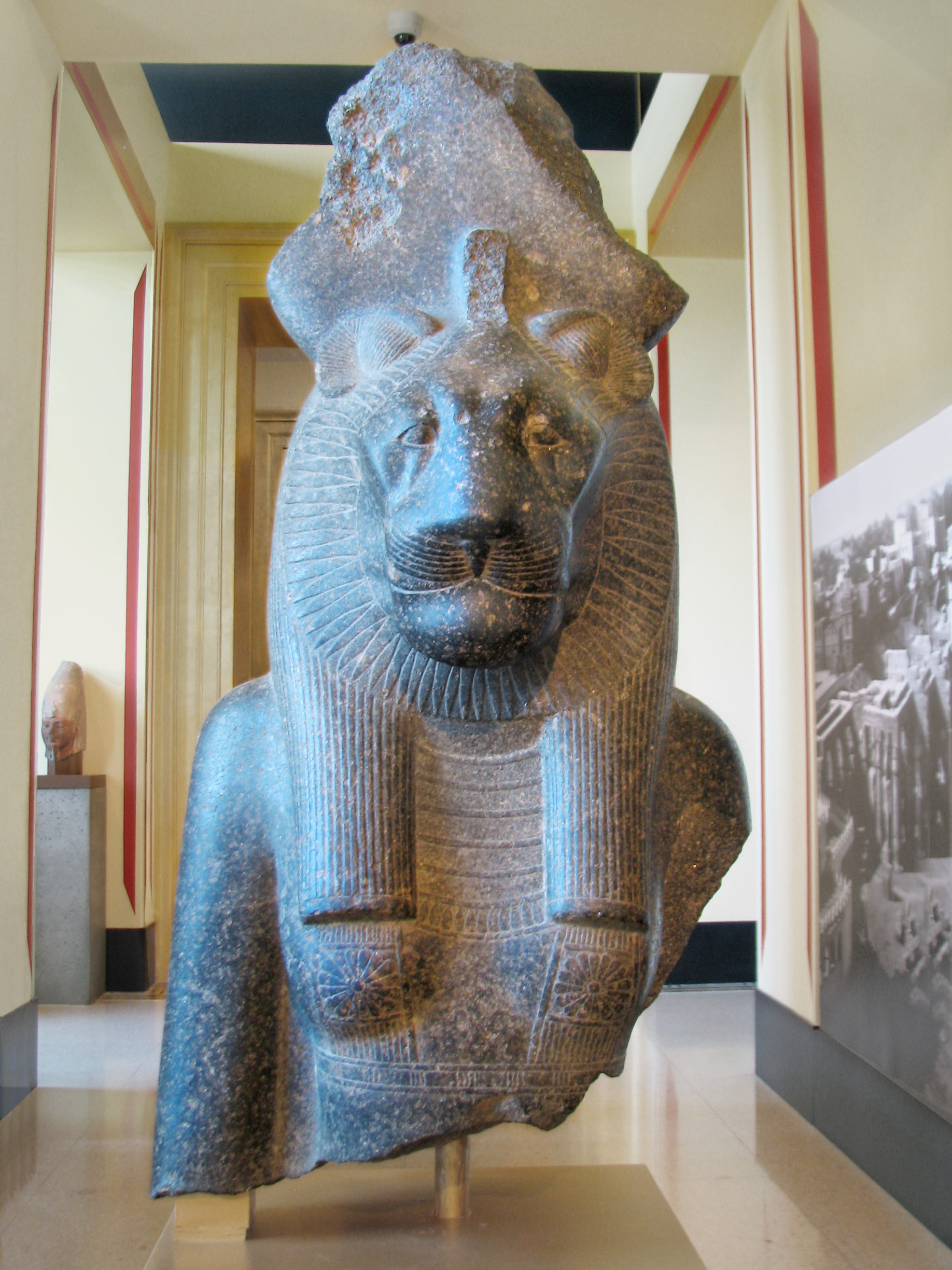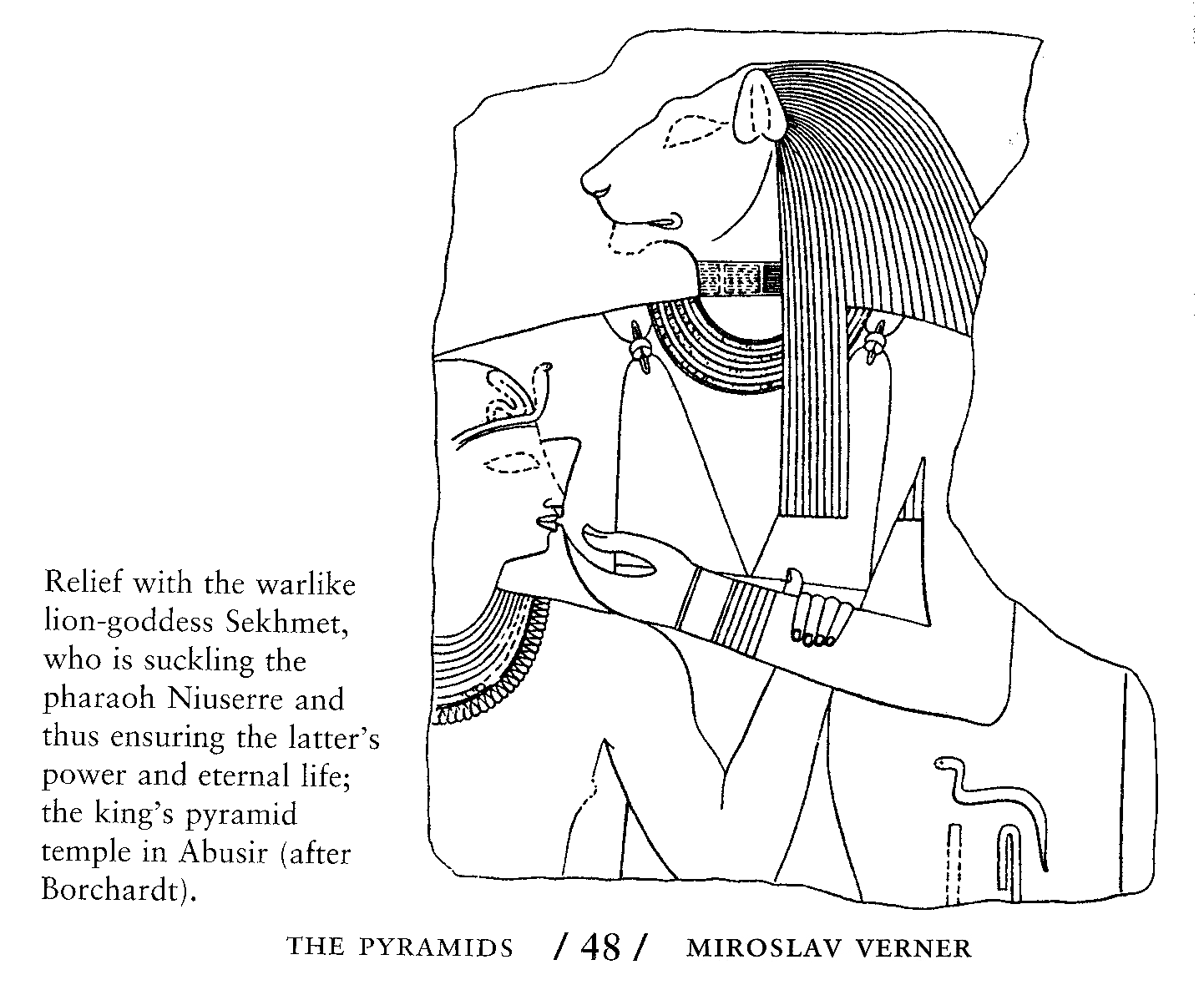

Bust from an Enthroned Statue of Sakhmet
Granodiorite, New Kingdom XVIII, reign of Amunhotep III (circa 1390-1352 B.C),
from Thebes
Brooklyn Museum 1991.311
Photos © Joan Lansberry, above May 2008, below May 2012, edited 2016

|
(from the info card) "The goddess Sakhmet, whose name means 'The Powerful One,' was worshipped at least as early as the Old Kingdom. In the New Kingdom she became the wife of Ptah, chief god of the Lower Egyptian capital of Memphis. She also became closely associated with Mut, wife of Amun, king of the gods at the Upper Egyptian capital of Thebes. Together these goddesses could represent the unity of Upper and Lower Egypt, conceived of as a duality."
(from Hathor Rising, by Alison Roberts, page 13) |
